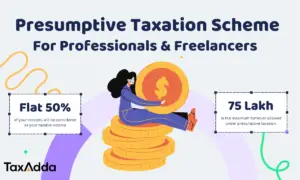Eligible Person
Rebate under Section 87A is allowed only to individuals resident in India whose total taxable income is below the specified limits. Please note that the word is taxable income, so it is after all deductions such as 80C, 80D etc.
The specified limits are
| Financial Year | Taxable Income Limit |
| 2018-19 | Rs. 3,50,000 |
| 2019-20 | Rs. 5,00,000 |
Companies, firms or Hindu Undivided Family cannot claim this rebate.
Eligible Amount
Rebate under section 87A is allowed from tax payable before levy of Education cess, secondary and higher education cess & Surcharge. The amount of rebate is 100% income tax liability subject to maximum limits as under
| Financial Year | Maximum Rebate Limit |
| 2018-19 | Rs. 2,500 |
| 2019-20 | Rs. 12,500 |
The education cess will apply on taxable income after deduction of this rebate.
Therefore, no income tax is payable by individuals whose taxable income is less than Rs. 5 lakh in FY 2019-20. And when the income exceeds Rs. 5 lakh then tax is payable as per income tax slabs so tax on taxable income of Rs. 5,01,000 comes to Rs. 12,700 excluding cess.
Also note that if income tax is payable on special rates (for example 15% for share trading profit) then there will be net tax payable even if the income is below Rs. 5 lakh in FY 2019-20.
Relief under section 87A will be calculated automatically if you are filing income tax return through excel or java utility.
Why exemption limit is not increased rather than giving rebate
If the government increases the exemption limit then it will result in a decrease in income tax for all individuals including individuals who has income in crores. The government only wants to decrease taxes for persons who fall in a lower income bracket. Therefore, rebate under section 87A is introduced to lower the tax for individuals with low income without decreasing tax for persons with higher income.
Bare Act for Section 87A – Incometaxindia.gov.in

